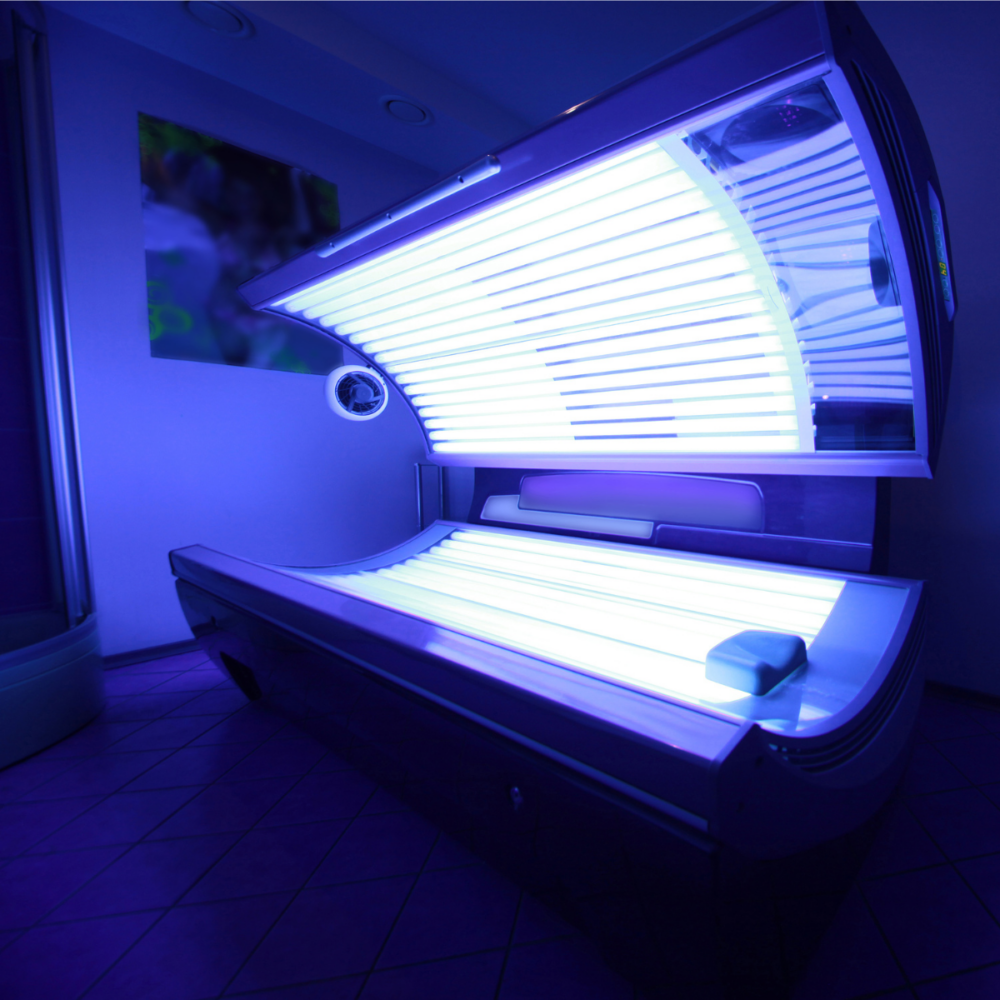Tanning beds are making a comeback. Here’s why that’s a bad thing.

The indoor tanning industry was booming in the mid-1980s. In the 2000s, people began to understand its negative effects and spread awareness of its harms. Now, it’s back in style.
The perpetrator of this trend? TikTok. Search for #SunBed on the popular short-form video app and you’ll instantly access 56,000 posts sharing tips from tanning salons and videos of young adults saying they don’t care about the harm tanning causes, as long as they look good. Another common type of video in the tag? Stories of skin cancer patients sharing their regret for using tanning beds. Despite these warnings, many people share on TikTok they’d rather be glowy and at-risk than pale and safe.
Using a tanning bed exposes you to dangerous ultraviolet (UV) radiation and is unequivocally unsafe. In fact, people who first use a tanning bed before age 35 increase their risk for melanoma by 75%.
But while more people know to wear sunscreen, hats and lip balm when outdoors to reduce their risk of skin cancer, many are fooled into thinking indoor tanning is a safe alternative to sun exposure — especially when their tanning salon is part of their health club. Gyms like Planet Fitness have membership options that include tanning beds, promoting a false association between fitness, health and tanning.
Other tanning myths include that indoor tanning will give you a “base coat” that can prevent sunburns, and that it will clear blemished skin. So, let’s do some debunking! The idea of a “base tan” is entirely false—all tanning damages your skin.1 Tanning, whether it be indoors or outside in the sun, also makes your skin age more quickly, causing wrinkles and age spots. It’s a myth that a nice tan will make you look younger — in fact, the American Academy of Dermatology warns how tanning dramatically speeds up how quickly your skin ages. As for covering skin imperfections, tanning may initially cover acne, but it can cause more breakouts after wearing off.
While regulations for minors or complete bans on tanning beds exist in 44 states and the District of Columbia, the decision to restrict or ban tanning bed use in people under the age of 18 varies by state after a failed attempt to enact a proposed rule by the Food and Drug Administration (FDA) in 2015. According to the National Library of Medicine, young adults are the most frequent users — 37% of young women have used a tanning bed at least once.2 Whether you realize it or not, it’s likely that someone in your life has used a tanning bed before. If you can think of that someone, tell them it’s not worth it.
Tanning beds may be trending, but we urge you to put your health first. The best glow you can have is the glow that comes from a healthy lifestyle: from drinking water, moving your body and protecting your skin.
May is Skin Cancer Awareness Month. To learn more about ways to protect your skin — including other harmful effects of tanning beds — visit stayskinhealthy.org.
1https://www.health.harvard.edu/skin-and-hair/are-there-benefits-to-a-base-tan